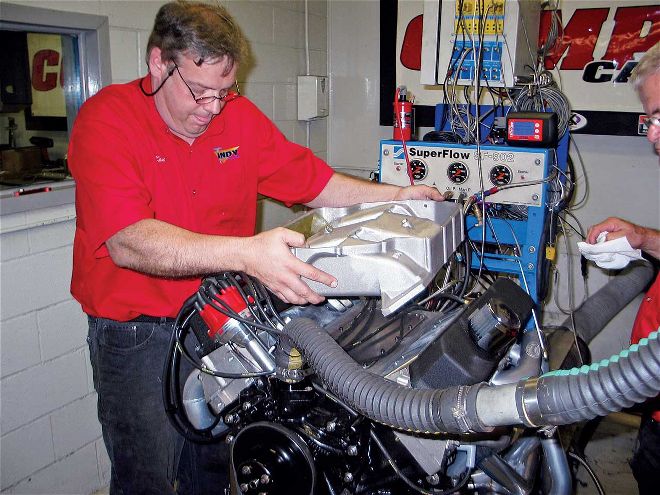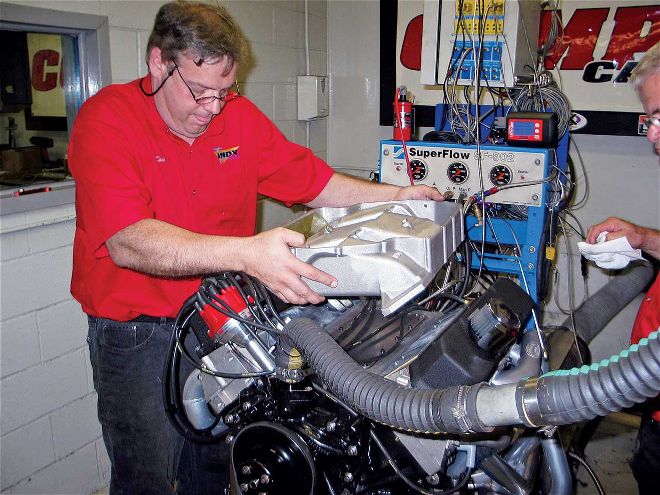
With so many intake manifolds on the market, it can be difficult to decide just which one is correct for your application. Heavy cars with small camshafts and high final gear ratios can benefit from a low-volume, dual-plane design, while all-out race engines generally perform better with open plenum intake manifolds. Though testing all the available intakes for Mopar applications would be nearly impossible, we did get a chance to compare three popular intake manifolds for the big-block Mopar while we were at Comp Cams for the 2008 Amsoil/Mopar Muscle Engine Challenge. While Indy Cylinder Heads' contest-winning engine was on the dyno, we made pulls with their 440-15 tunnel-ram intake, inline cross-ram intake, and single-plane 4150 flange intake (adapted to a 4500 flange) to learn just how they would affect the performance of the engine.
 How much difference does an intake manifold make? We dyno tested three distinctly different ones on the winning Amsoil/Mopar Muscle Engine Challenge 440 to find out.
How much difference does an intake manifold make? We dyno tested three distinctly different ones on the winning Amsoil/Mopar Muscle Engine Challenge 440 to find out.
The 440 we're using for the comparison is powerful, but not really too exotic. Indy did get creative finding ways to make power from their combination, but it is still simply a .060 inch over 440, with Indy SR cylinder heads, a big (.830 lift) roller camshaft, and 11.0:1 compression. We performed the test pulls on Comp's Superflow dyno, using Rockett Brand 93 octane pump fuel, and didn't make any other changes during the pulls. Since the tunnel-ram was on the Indy entry when it arrived at the competition, we assumed it made the best combined peak numbers. What we didn't know was how much, or rather how little difference the other two intake designs would make on this engine.
With the tunnel-ram and two 675-cfm Barry Grant Race Demon carbs, the .060 over 440 made 756.5 horsepower and 599.1 lb/ft of torque in the configuration as run in the engine challenge. Our first intake swap was to bolt on Indy's inline cross-ram with a pair of 600-cfm Edelbrock carburetors, which we tested in two configurations. Since it's commonly thought that filling the cross-ram's plenum with epoxy to take up volume increases power, we decided to test the cross-ram both ways. Fortunately, Indy had prepared a pair of inserts to serve as epoxy, and while the inserts did make slightly more power, it wasn't as much as we expected, and far less than the tunnel-ram.
Next, we tested the engine using Indy's 440-2 intake with their ported 440-2A adapter for a Dominator flanged carburetor. Testing this intake with a Race Demon 1090 four-barrel, we were surprised as the single carb made more torque than any other configuration at a whopping 606 lb/ft. Even more impressive, the torque and horsepower curves were broad, with peak power dropping by less than 20 horsepower when compared to the tunnel-ram.
So there you have it, of the four configurations we tested, the tunnel-ram made the best peak horsepower, and came in second in terms of torque. Top torque numbers were with the single-plane 440-2 intake, which came in second on horsepower. And if you like the cross-ram, you'll sacrifice some power and torque, but can gain a little back by adding epoxy or other inserts to the plenums.